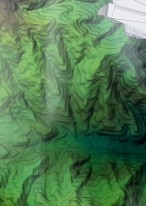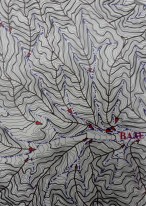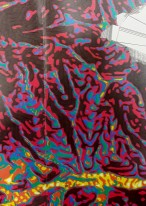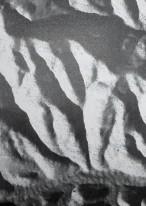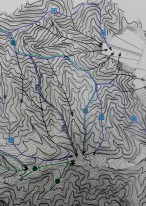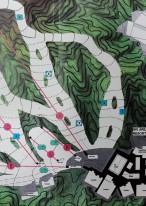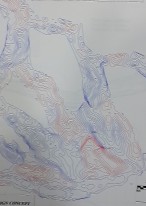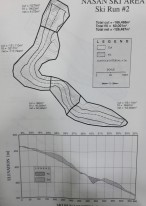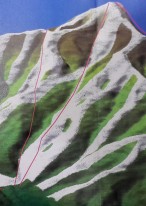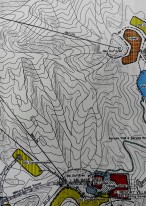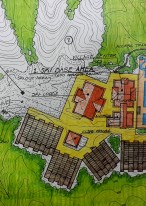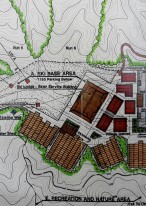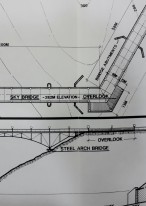Ski Area Development
Resort Master Plan Scope of Work

The first step is to visit and explore the site and prepare the following analyses:
1.1 Ski Terrain Capacity Analysis
1.2 Base land Capacity Analysis
- a) Ski area day use buildings and skier circulation
- b) Parking for automobiles and/or busses
- c) Ski area maintenance and administration facilities
- d) Recreation resort village, accommodations, shops, and recreational amenities.
1.3 Natural Resources Analysis:
- a) Soils and Surgical Geology.
- b) Vegetation
1.4 Man made Resource Analysis
- a) Extent and location of water for machine snowmaking
- b) Extent and location of electric power (Feasibility for wind power)
- c) Extent and location of existing transportation systems which could provide access to the resort complex
2.1 Terrain Mapping/Map
2.2 Basic Maps
- a) Topography and Hydrological Systems
- b) Vegetation, Soils, and Surface Geology
- c) Land Ownership
- d) Regional and sub-regional transportation systems relative to the resort complex
- e) Solar Analysis
2.3 Terrain Gradient
| a) | 0-10% | - Unskiable | - White |
| b) | 11%-15% | - Beginner | - Yellow |
| c) | 16%-25% | - Novice | - Orange |
| d) | 26%-35% | - Intermediate | - Green |
| e) | 36%-45% | - High Inter | - Blue |
| f) | 46%-60% | - Advanced | - Red |
| g) | Over 60% | - Expert | - Black |
2.4 Soils and Surficial Geology Inventory
2.5 Transportation Systems Inventory
2.6 Ski Terrain
2.7 Base Facilities
2.8 Weather
3.1 Mountain Design
Thus, we will develop three concepts as follows:
- a) Narrow ski run concept
- b) Wide ski run concept
- c) Mixed ski run concept
3.2 Ski Bases and Resort Villages
- a) Ski Base Area
- 1) Day use lodges and skier services facilities
- 2) Day use parking and access transportation systems
- 3) Ski and base area maintenance facilities
- 4) Utility infrastructure
- b) Recreation Resort Village
- 1) Lodge, including rooms, restaurants, shops, and visitor amenities
- 2) Village parking and access transportation system
- 3) Condominium complexes, including club house, pool, and other owner amenities.
- 4) Conference center, in conjunction with lodge and condominiums
- 5) Outdoor play courts, cross country skiing and hiking trails
- 6) Community services facilities
- 7) Utility infrastructure
- 8) Recreation resort maintenance facilities
- a) Number and layout of ski trails providing the appropriate division of skier skills to match the anticipated market demand.
- b) Number, size, type, and location of ski lifts to adequately serve the design capacity.
- c) Base lodge day use space and location adequate to meet the requirements.
- d) Maintenance shop size and location.
- e) Auto and bus parking areas capable of handling up to 120% of the design capacity.
- f) Number and location of retail shops, restaurants, conference center, and accommodations based on balancing skier and bed capacity so as to create an economically viable resort.
- g) Location for a ski jumping hill complex and a bobsled/luge facility
- h) Location and scope of identified resort facilities such as an outdoor concert concourse, walking trails, health spa, etc.
- a) Ski Jumping Complex
- b) Bobsled / Luge Facilities
- c) Ski Run Lighting Plan
- d) Wastewater Treatment Plan
- e) Solid Waste Incineration Plan
- f) Wind Power Generators
Master Plan
- a) An introduction to include:
- 1) Location and regional context
- 2) An overview of the country ski resort industry
- 3) Planning objectives
- 4) Who, what, when, where, why, and how
- b) Criteria and Parameters
- 1) A glossary of technical terms
- 2) Physical Feasibility
- 3) Ski Area Design
- 4) Machine snowmaking
- 5) Base Area Design
- 6) Recreation Resort Village
- 7) Ski Jumping Complex
- 8) Bobsled & Luge Run
- c) Inventory
- 1) Physical Base Data
- (a) Soils and Surficial Geology
- (b) Vegetation
- 2) Climate and Weather
- 3) Man-made Base
- a) Land Ownership and Zoning
- b) Existing land uses
- 4) Transportation and Access
- 5) Water Resources
- 6) Terrain Potential
- a) Suitability - (fall line analysis)
- b) Grades
- c) Capacity
- 7) Base Area Potential
- a) Lodge sites
- b) Parking sites
- 8) Site Economic Characteristics
- 9) Summary of Potentials and Constraints
- 1) Physical Base Data
- d) Ski and Recreation Resort Design Concepts
- 1) The Conceptual Focus and Design Requirements (objectives)
- 2) Methodology
- 3) The Optimum Mountain Layout
- (a) Ski runs and balance
- (b) Ski lifts and balance
- (c) Snowmaking coverage and capacity
- (d) Slope grooming requirements
- 4) The Optimum Base Facilities Layout
- (a) Day use facilities - Scope and location
- (b) Parking and Transportation Systems
- (c) Recreation Resort Village
- 5) The Optimum Ski Jumping, Bobsled & Luge Layout
- 6) Phasing
7.1 Month 1 & 2 - Commence Phase-I: visit to the site to explore the terrain, verify map concepts, collect data (soils, geology, weather, forest cover, etc.) and determine the existence of adequate water resources, power and alternative transportation/access potentials.
7.2 Month 3 & 4 - Commence Phase-II: Technical Assessment by digitizing the topographic map, creating a colored grades map and completing a preliminary ski run inventory and terrain capacity analysis. We will also identify potential sites suitable for supporting vacation home (condominiums) and village sites.
Prepare three development concepts, and conduct a workshop in City to present ideas and receive feedback and owner’s ideas for integration into the plans.
7.4 Month 5 - Complete the physical master plan document and submit the final to Owner.
Resort Master Plan Project Products
The site master plan will be completed in five phases of analysis and design with a major presentation, review, and decision point occurring at the end of Phase III. The presentation materials at the end of Phase III will include maps, drawings, figures, and a short summary report providing critical calculations and findings. The Phase IV Master Plan Report will be a high quality document with photos and colored maps with appropriate text documenting the technical analysis, the design criteria and process, and the programming and design of the Mountain and Resort Village.
Ⅰ. INTRODUCTION
- 1. Location and regional context
- 2. An overview of the Korean ski and golf resort industry
- 3. Planning objectives
- 4. Who, what, when, where, why, and how
Ⅱ. CRITERIA AND PARAMETERS
- 1. A glossary of technical terms
- 2. Physical Feasibility
- 3. Ski Area Design
- 4. Machine snowmaking
- 5. Base Area Design
- 6. Recreation Resort Village
III. INVENTORY
- 1. Physical Base Data (soils, surficial geology, vegetation, grades, elevations, etc.)
- 2. Climate and Weather
- 3. Man-made Base
- a) Land Ownership and Zoning
- b) Existing land uses
- 4. Site Access and Transportation Systems
- 5. Water Resources
- 6. Terrain Potential
- a) Suitability - (fall line analysis)
- b) Grades
- c) Capacity
- 7. Base area Potential
- a) Lodge sites
- b) Parking sites
- 8. Special Event Sites and Potential
- 9. Road Access and Traffic
- 10. Site Economic Characteristics
- 11. Summary of Potentials and Constraints
Ⅳ. SKI RESORT DESIGN CONCEPTS
- 1. The Conceptual Focus and Design Requirements (objectives)
- 2. Methodology
- 3. The Optimum Mountain Layout
- a) Ski runs and balance
- b) Ski lifts and balance
- c) Snowmaking plan
- d) Slope grooming requirements
- 4. The Optimum Base Facilities Layout
- a) Day use facilities - Scope and location
- b) Parking and Transportation Systems
- c) Recreation Resort Village
- d) Residential development
- e) Summer Season Recreation
- 5. The Optimum Ski Jump & Bobsled/Luge Layout
- 6. Phasing
| Figure number and name | Scale | |
|---|---|---|
| 01. | Area Location | 1:1,000,000 |
| 02. | Study Area | 1:25,000 |
| 03. | Land Ownership | 1:2,500 |
| 04. | Solar Analysis | 1:2,500 |
| 05. | Fall-line Analysis | 1:2,500 |
| 06. | Soils and Geology | 1:2,500 |
| 07. | Vegetation | 1:2,500 |
| 08. | Terrain Capacity Analysis | 1:2,500 |
| 09. | Slope Inventory - Mountain | 1:2,500 |
| 10. | Plan View - Option A | 1:2,500 |
| 11. | Perspective View - Option A | |
| 12. | Plan View - Option B | 1:2,500 |
| 13. | Perspective View - Option B | |
| 14. | Plan View - Option C | 1:2,500 |
| 15. | Perspective View - Option C | |
| 16. | Mountain Master Plan | 1:2,500 |
| 17. | Ski Run Profiles / Cut & Fill | 1:1,000 |
| 18. | Ski Lift Profiles / Grading | 1:1,000 |
| 19. | Base Area Slope Analysis | 1:1,000 |
| 20. | Base Area Land Use Analysis & Zoning | 1:1,000 |
| 21. | Village Opportunities & Constraints | 1:1,000 |
| 22. | Village Concept Plan | 1:1,000 |
| 23. | Village Grading & Drainage | 1:1,000 |
| 24. | Village Site Plan | 1:1,000 |
| 25. | Village Cross Section | 1:500 |
| 26. | Village Parking and Circulation Plan | 1:1,000 |
| 27. | Village Phasing Plan | 1:1,000 |
| 28. | Resort Area Master Plan | 1:2,500 |
| 29. | Architectural Program and Design Guidelines | |
| 30. | Others if nessary |






